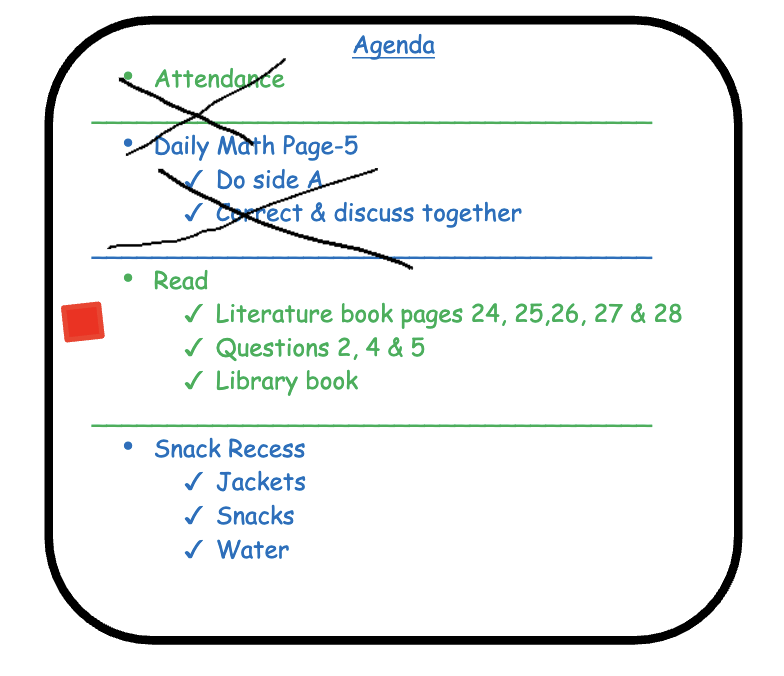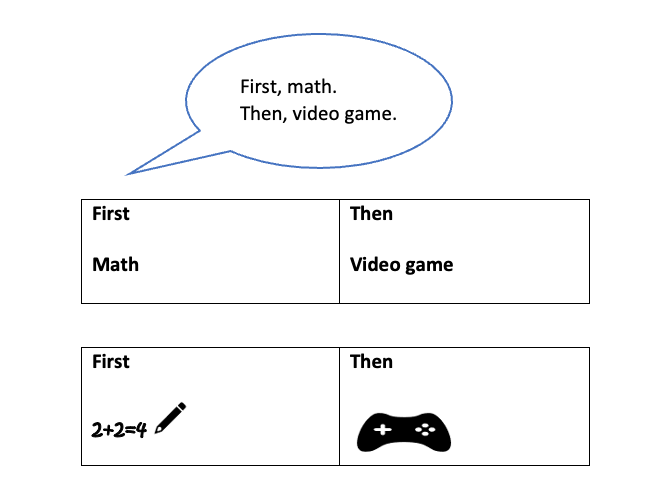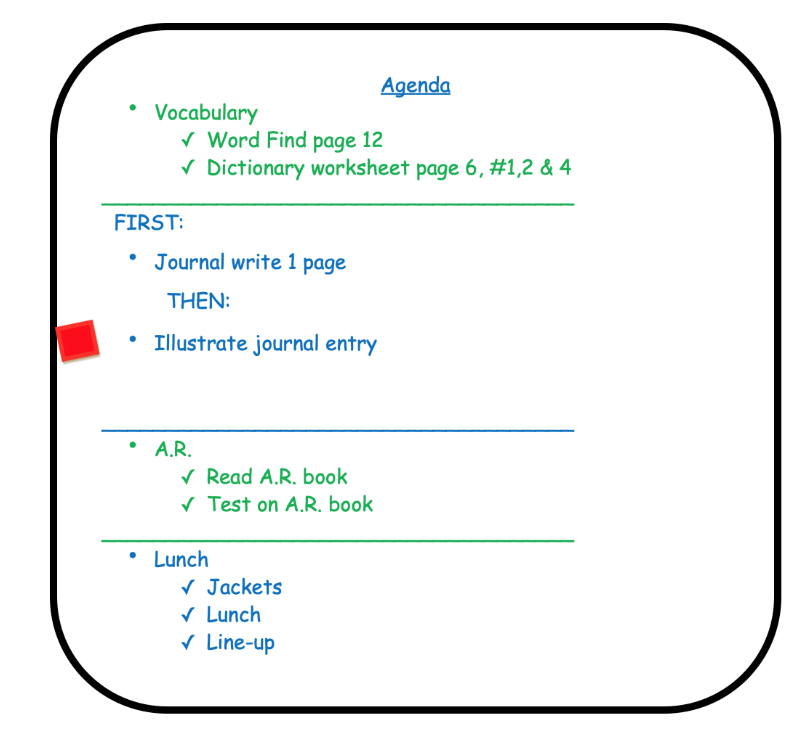Substitute Teaching: Evidence-Based Practices for Inclusive Classrooms
Pictured: Classroom of students and a substitute teacher
By Angela Shaw
From blackboards to blacktops, substitute teachers connect with students and enjoy an exciting and fulfilling profession. They step in when a teacher is absent and follow teacher lesson plans to actively teach classrooms full of learners. Students rely upon their substitute teachers to inspire them and bring joy to their learning experiences, as well as keep them safe. As a guest teacher, substitutes find themselves bringing an amazing assortment of learning materials to life and engaging students through all kinds of education technology (EdTech). They lead proactive classroom activities in support of emotional well-being and oversee various post-Covid protocols. Substitutes put their organization and communication skills into action as they step in to supervise library schedules, host classroom special events, and connect with the school community through before-during-or-after school duties. Enjoying fun school-wide assemblies and school spirit days further their connection with students, families and staff.
“Today, amid the national crisis of teacher shortages, substitute teachers are in higher demand than ever. Ensuring continuity is in place for students through competent and effective substitute teachers is of utmost importance for teachers, school administrators and parents. Three of the most successful attributes that a substitute teacher brings to the classroom are the ability to positively manage classroom behaviors, connect with students, and follow a busy schedule.”
Evidence-based practices (EBP) developed by education researchers provide a launchpad of science-backed possibilities to enhance success with students at your next sub gig, especially in inclusive settings. As an added benefit, these tools can guide and support you throughout your day. Whether you’re new to subbing or a seasoned veteran, read on to discover three expert-backed supports to tuck into your substitute toolbox.
Tools of the Trade: Providing access and acceptance to all students is of vital importance to today’s educators, whether it’a general education or special education classroom. Creating learning opportunities that meet the needs and possibilities of all their students begins with good classroom management tools with a focus on establishing clear rules with goals and expectations.
These essential tools support inclusive teaching and learning. They’re universal and directly taught by the teacher. Teachers may make note of some of these practices in their communication to you. They may share visual or auditory signals they use to communicate with students in their notations. Take a stroll around the classroom and read the walls, synthesize teacher’s notes, and observe student behaviors and input from classroom assistants and aides to discover the classroom management tools already available to you. A few strategic tools that you may see around the room include:
Classroom rules and expectations.
Daily schedules.
Student folders.
Containers to organize supplies.
Labels.
Student helpers or job lists.
Subs can easily help manage their day—and their students’ day—by implementing EBPs known as visual supports (VS). Through a universal approach using VS many students with and without special needs increase their ability to navigate and participate in the day’s events and lessen the anxiety and frustration that change often brings. They get a boost toward understanding and engagement when they’re able to visually understand verbal communication, expectations, and transitions. VS offers many foundational aspects to your students’ learning day, including potential to clarify information, increase motivation, provide structure, routine and sequence. Much like calendars, phone alarms, checklists and step-by-step instructions we use in our everyday life, the evidence-based visual supports below are designed for substitute teachers to supplement teacher lesson plans and enhance student self-regulation and independence:
STRATEGY # 1
Visual schedule: Create an Agenda of the Day on the classroom whiteboard visible to all as a visual schedule and checklist to support students while they move through their day. This visual structure allows students to anticipate what is going to happen and assures them of where they are at within their day. By supporting transitions and providing a concrete visual map, the outcome of the visual schedule promotes calmness and engagement. Additionally, it allows the substitute to stay on course and remain engaged with students.
How to:
Write it: Before the class arrives, list the first interval of events from the teacher’s lesson plan. Divide the list into chunks, as the day progresses, with natural breaks as ending points. For example, list up to the first recess or break. Then, the next chunk might end with P.E., music class, lunch, assembly, going home, etc. Include page numbers students need to read. List each item within a chunk in the same color. Draw a dividing line under each chunk to differentiate between events. No need to list steps in a classroom routine, as students are already aware of these and will probably even tell you what they are.
Two-color system: As you list each event, alternate between colors to support students’ visual tracking.
Itemize list: Use a checkmark, star, or other mark for each chunked event.
Teach it: Introduce the agenda at the start of the day. Let students know that each period of the day you will list what their teacher’s plans for them are to help them to know what is happening. Teach students the redirecting verbal prompt you will use to help them with finding their place if they get lost. This could be a simple phrase such as, “Check the schedule” or “Check our agenda.” Pairing a hand gesture such as pointing to the agenda will provide a great visual support along with the redirecting phrase.
Mark it: For magnetized boards, use a magnet to mark where you are in the list.
Tools you may want to add to your sub bag to create a classroom agenda:
Package of dry erase markers in assorted colors.
Refrigerator magnet (bright-colored heavy-duty round or rectangular ones are visually appealing and easy to move).
Image Courtesy of: Angela Shaw
Description of Image: Example of Agenda
Example of classroom visual schedule: Notice that times do not appear on this agenda. The red magnet moves along with the pace of the class. Paraphrasing teacher’s notes into a list format and chunking the day, structures students’ and substitute teacher’s day.
STRATEGY # 2
Visual timer: Visual timers are small but powerful tools that can complement other techniques. They transform the abstract concept of time to a more concrete notion. Monitoring and understanding time become easier for students when they can see it pass with a countdown timer. In a quick glance, students gain clearer understanding about how much time remains. Students can use their time more wisely without needing to know how to tell time or how to read a clock. These effective tools are available in many forms, such as a sand timer where sand falls within an hourglass or a visual countdown timer where a colored disk disappears as time passes. A visual timer has the potential to help students:
Prepare for calmer transitions.
Ease anxiety generated by assignments, projects and tests.
Focus and engage on the task at hand.
Proactively move forward toward motivating tasks or events.
Manage time.
How to:
Find a space: Set the visual timer in a place where all students can see it at a glance, either on the teacher’s desk or another central location.
Teach it: Briefly introduce the timer at the start of the day. Let the students know that you’ll be setting the timer throughout the day so they can keep track of how much time they have left for certain activities.
Set it: Throughout the day set the timer for various tasks and transitions to support students as they navigate their day.
Photo Courtesy of: Angela Shaw
Description of Photo: Visual Timer
Decrease anxiety and increase engagement by making the abstract concept of time become a concrete and breathable element in the classroom. Visual timers, such as this one available through retail channels, are great for individuals or groups. This particular model offers up to 60-minutes of countdown time. In addition to the visual component, a beep provides an auditory signal at the end of the visual cycle.
STRATEGY # 3
First/Then: This EBP is a reinforcement theory best known for its impact in applied behavior analysis (ABA). A powerful tool to help motivate a student to complete a task they typically resist, it is one that behavior interventionists, teachers, and parents use. The idea is that through positive reinforcement (i.e.: the more enjoyable activity or event coming up) the individual finds inspiration to complete a low interest activity first. Many of us put the first/then strategy into action subconsciously throughout our day. We remind ourselves that we must first complete one less desired task and then we can engage in our rewarding activity. We may say to ourselves, “I must first file this incoming mail and then I can bake cookies with my family.”
The visual support clarifies the structure of the activities and the first/then language to those who need a more visual reminder. Students first engage in an activity that they prefer less and then enjoy engaging in an activity they enjoy much more. For example, consider a student who loves to play video games, but doesn’t enjoy engaging in math activities. Providing the student with the statement, “First do math; then video game” goes a long way toward student motivation. Pair a first/then statement with a visual statement card. The option of adding pictures or drawings on the card for students not yet able to read is another strong visual support.
Although this strategy is customizable to support individual students, the application is great to use for the whole classroom, too. This comes in handy when the class is excited about an activity, like tech time on their computer, drawing, etc. Some things to keep in mind when using this EBP:
Keep it visible and uncomplicated for students.
Ensure students are familiar enough with or have the support they need to complete the first activity.
Try to avoid using it as a bargaining chip. Using it proactively rather than reactively serves in avoiding overdoing the addition of the preferred activity whenever a problem arises.
Use your powers of observation and present only high interest preferred activities to reinforce “then” tasks, so as to keep interest and motivation high.
How to:
Integrating the first/then strategy within the visual classroom agenda is an effective way
to apply it universally.
Decide: As you write the agenda, figure out if there are any situations that might fit the criteria of needing extra clarity or motivation. (Hint: Check the teacher’s sub notes for emphasis on doing one thing before another).
Write it: List the two activities side-by-side within the classroom agenda with the words first and then as introduction.
Teach it: Briefly introduce the item with a first/then statement.
Pictured: Filled in agenda
Example of first/then: Although many intervention strategies present this strategy in a customized and individualized mode for students identified with special needs, this strategy can complement the visual schedule or class agenda universally. Writing the first/then activities in a horizontal format provides added structure and clarification for your students. Proactively use your observation and wisdom from previous classroom situations to determine any possible hurdles. For this class, the sub remembered that the 3rd graders often forget to do the writing and first leap into illustration. In a situation where the sub discovers the hurdle after students begin, it is perfectly acceptable and effective to kindly signal the class to stop and begin again. Once you have the classes’ attention, go back and visually reformat the activity chunk that students are finding challenging. They will appreciate the clarification.
Beyond Classroom Instruction: Spotlight on Visual Structures for the Substitute Teacher
Many of us have heard the saying, “A picture paints a thousand words.” This often holds true for students who are engaged in the process of learning, as well as the adults who support student learning. Here are a few visual strategies that you can put into practice to structure your workday.
Pictured: Stack of papers and supplies
Simplify your day by keeping loose papers like teacher lesson plans, attendance sheets, daily bell schedules, student handouts, notes to the teacher, etc. within a brightly colored folder. Use a vivid shade like canary yellow, hot pink, lime green and include clear labeling so the folder is easy to find and is a great visual reminder. Incorporating the classroom agenda system into this practice ensures that notes go home and tasks like attendance and lunch count happen.
Pictured: Timer
Use the visual timer you provide for students to monitor your time between classes. Never be late again opening the door to greet students or picking them up from recess. Managing your time the visual way is a self-care tool that will create a calming effect across your day.
Pictured: Sheet of notes
Create a custom substitute teacher template. Jotting your notes within a cheerful and professional looking template creates clear channels of communication and structures, as well simplifies your end of the day tasks.
Make a Difference as a Substitute Teacher
Have you been thinking about substitute teaching at your local school district? If so, you will find yourself in a meaningful career that offers adventure, creativity and community connection. Moreover, substitute teaching offers flexibility to people with unique schedules. Some substitutes choose to work daily or almost daily, whereas others may work part time. Substitutes are a diverse group of people who bring with them a wide and varied background. Between substitute assignments, these essential educators may be students at the local university, raising a family, providing care for an aging parent or a myriad of other roles. Each state has its own roadmap to becoming a substitute teacher. Reach out to your local school district or state department of education to find your pathway to becoming a substitute teacher.
About the author
Angela Shaw is a retired special educator with dual Master’s degrees in special education and school counseling. She writes about special education topics. With over 25 years in the field of public education, Angela synthesizes her broad range of teaching experiences and education to support families and educators as they navigate the diverse learning needs of children in their care across a challenging educational landscape.









